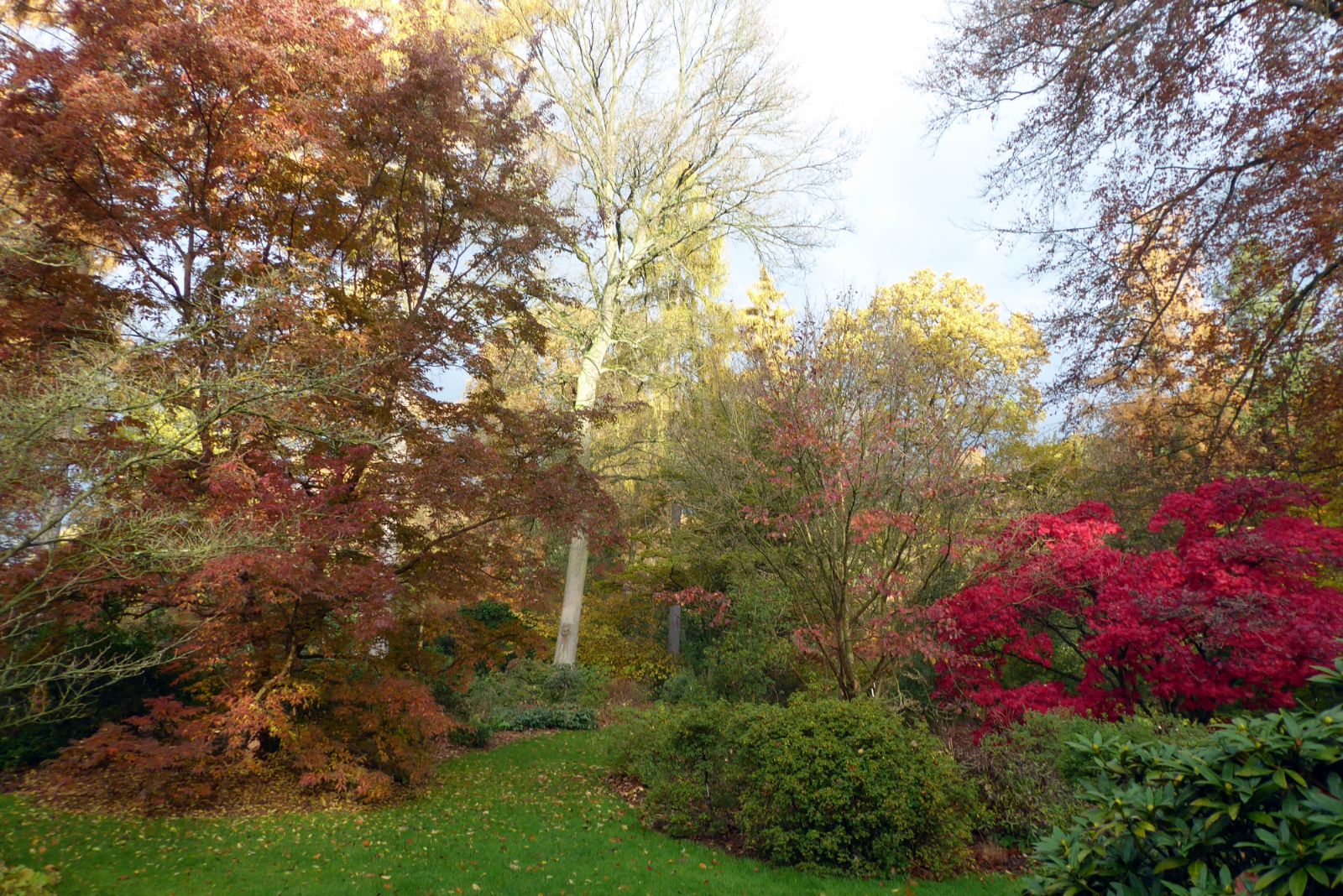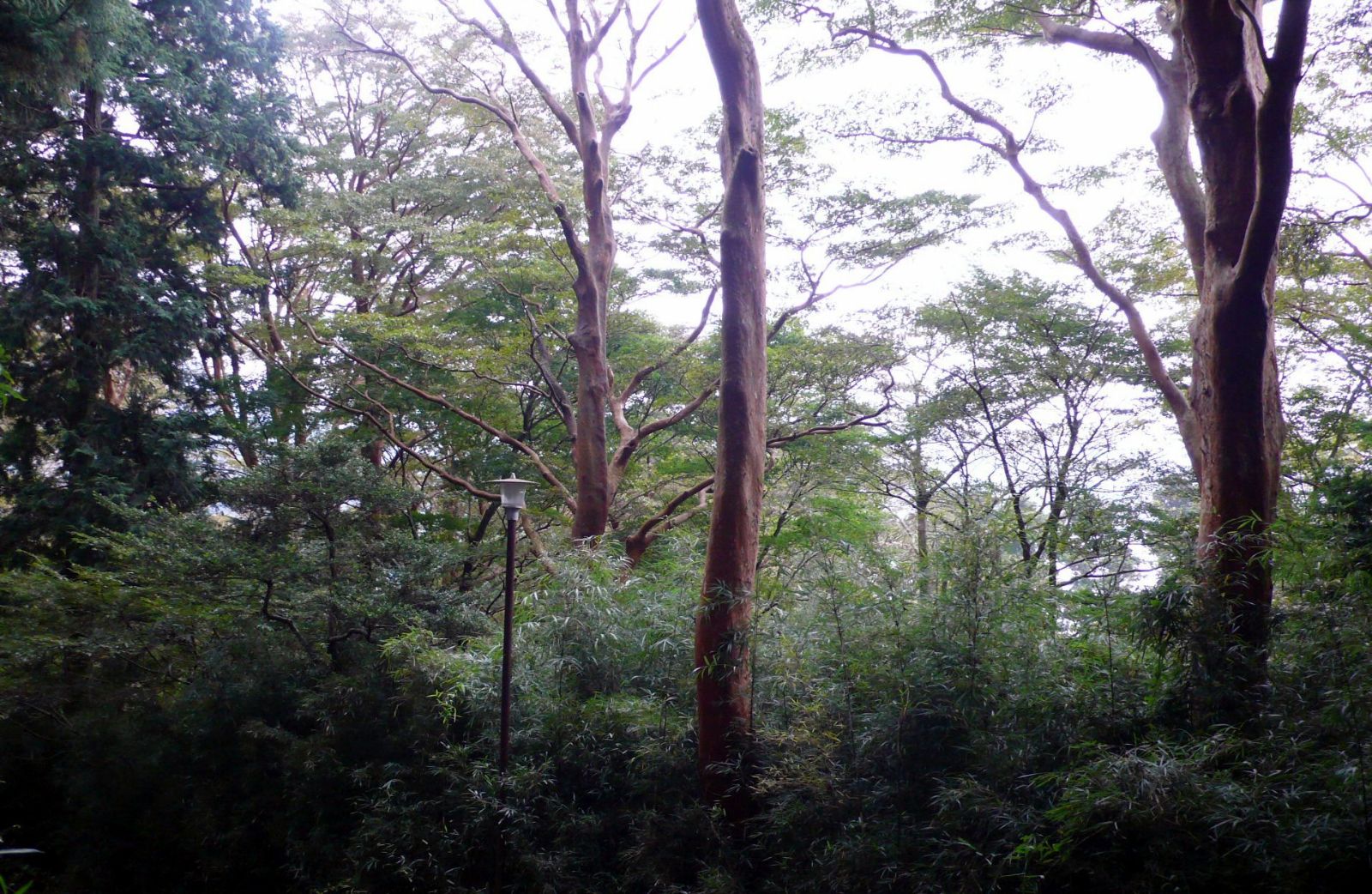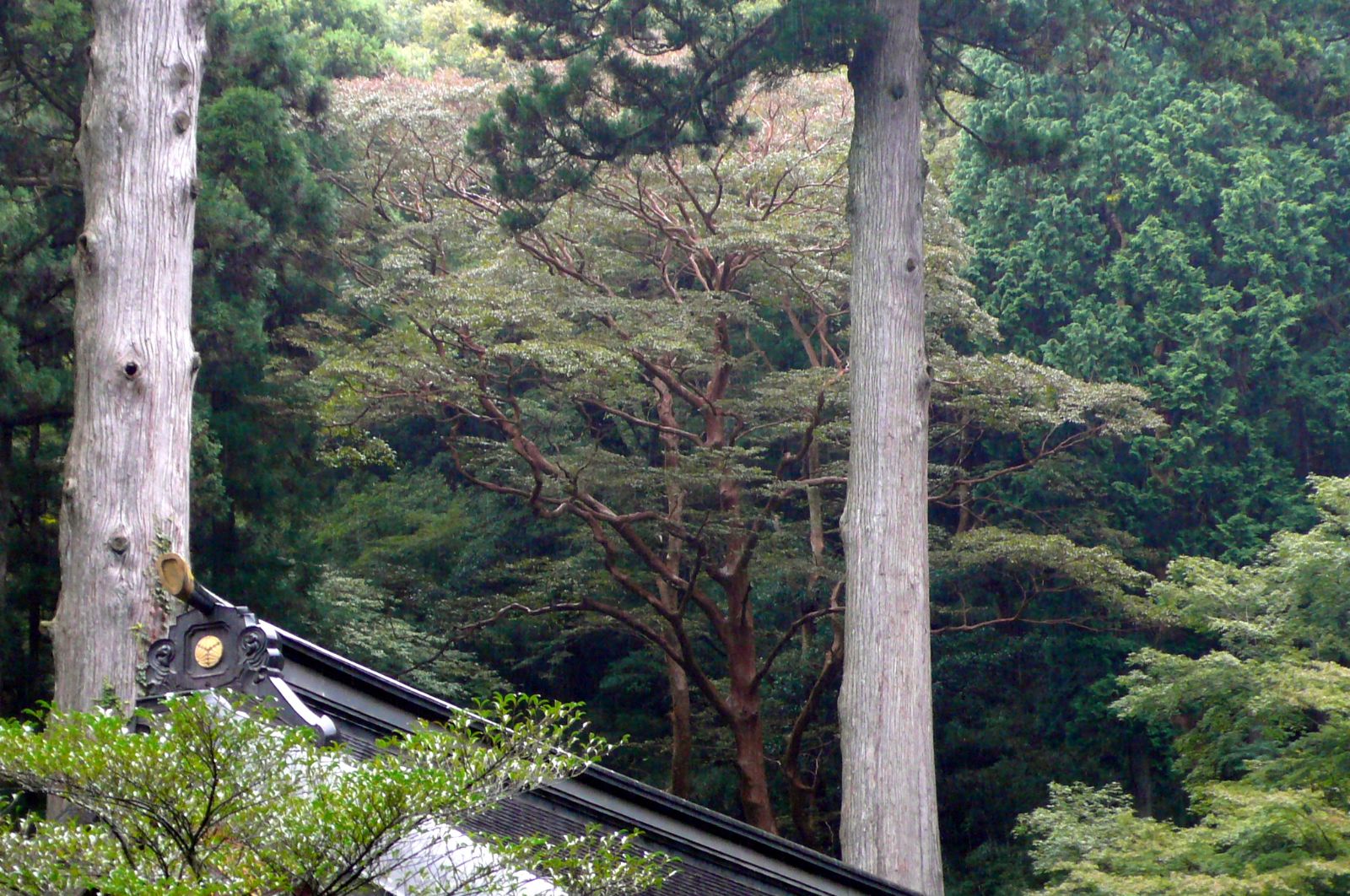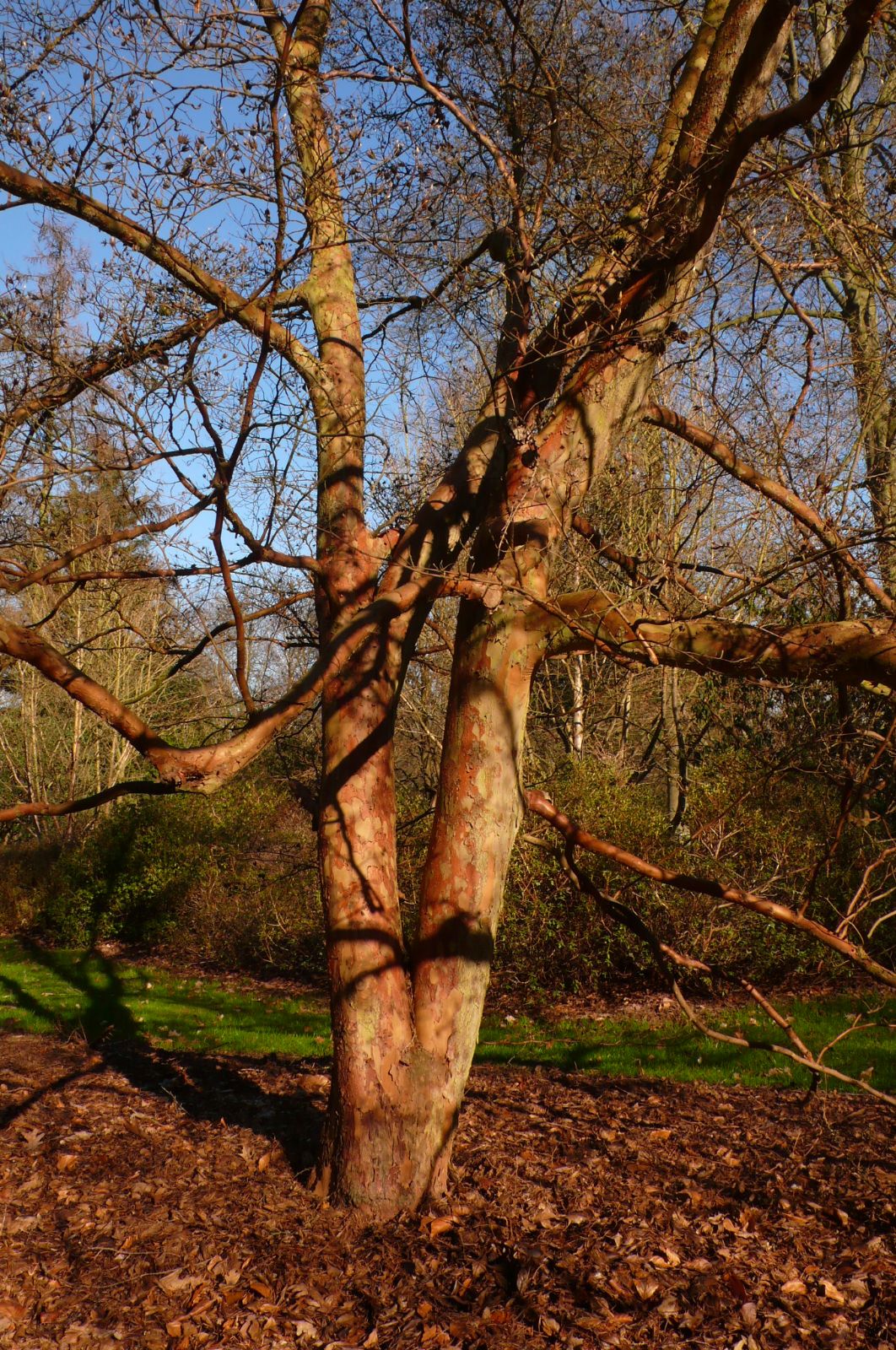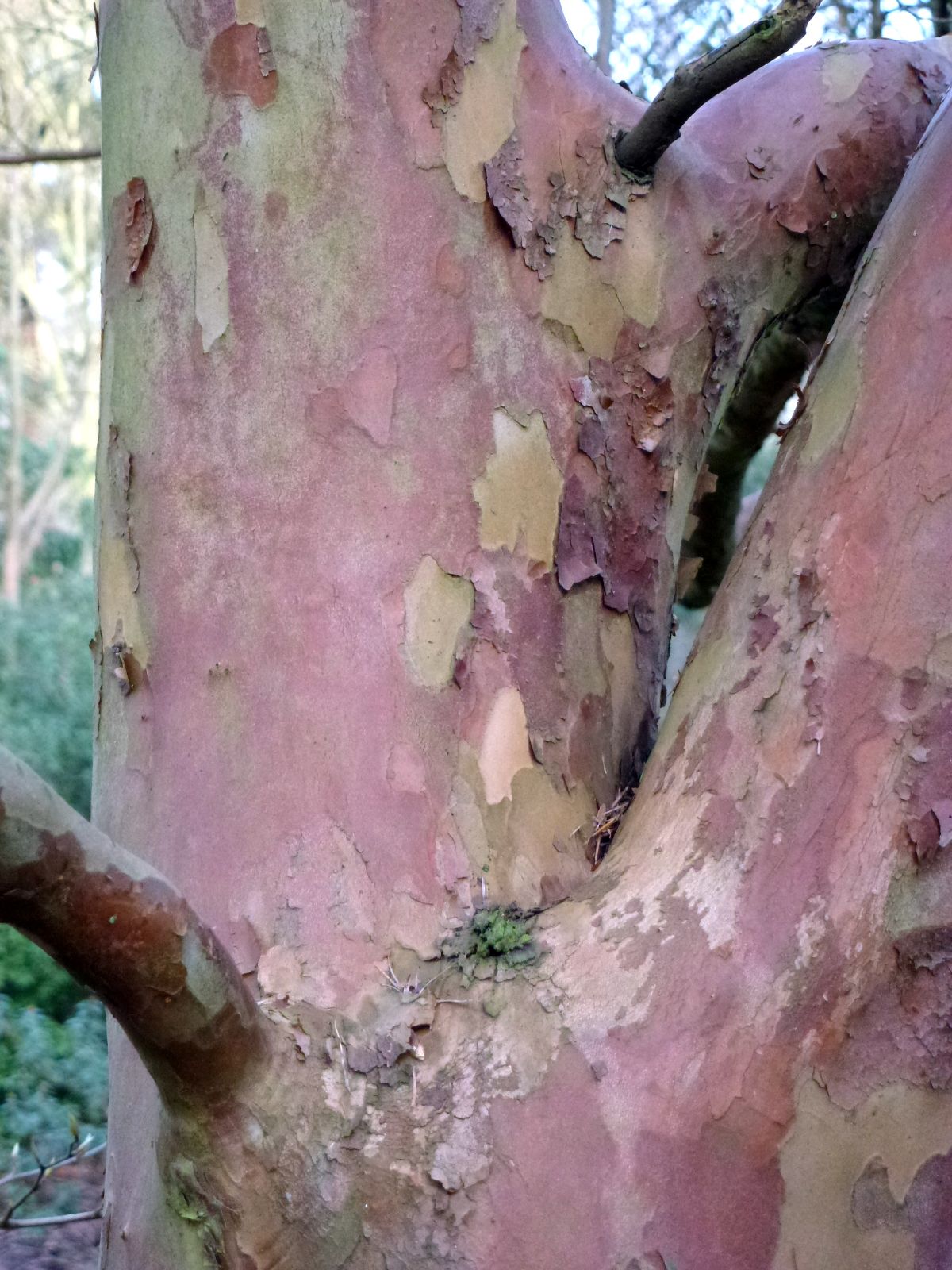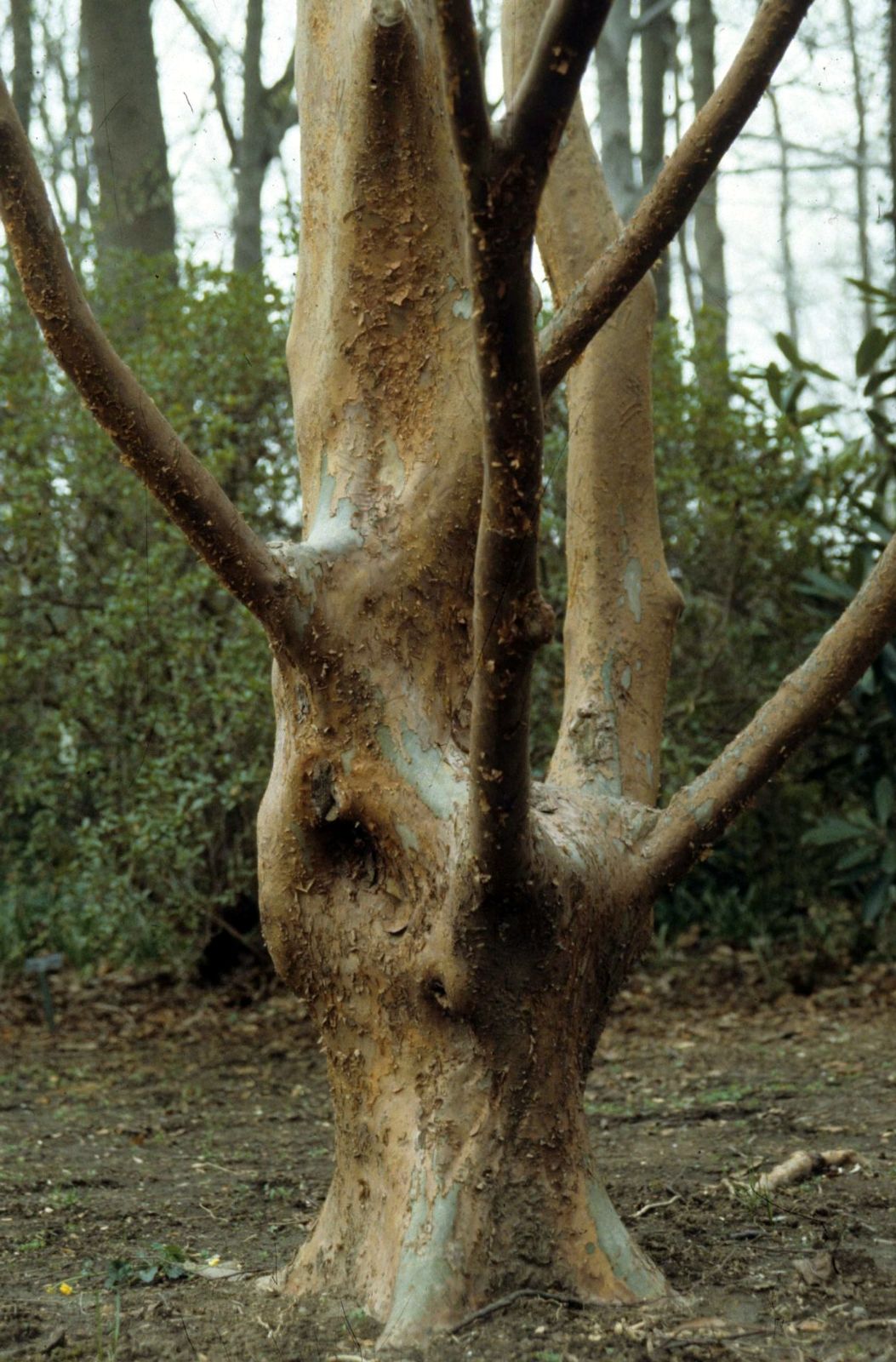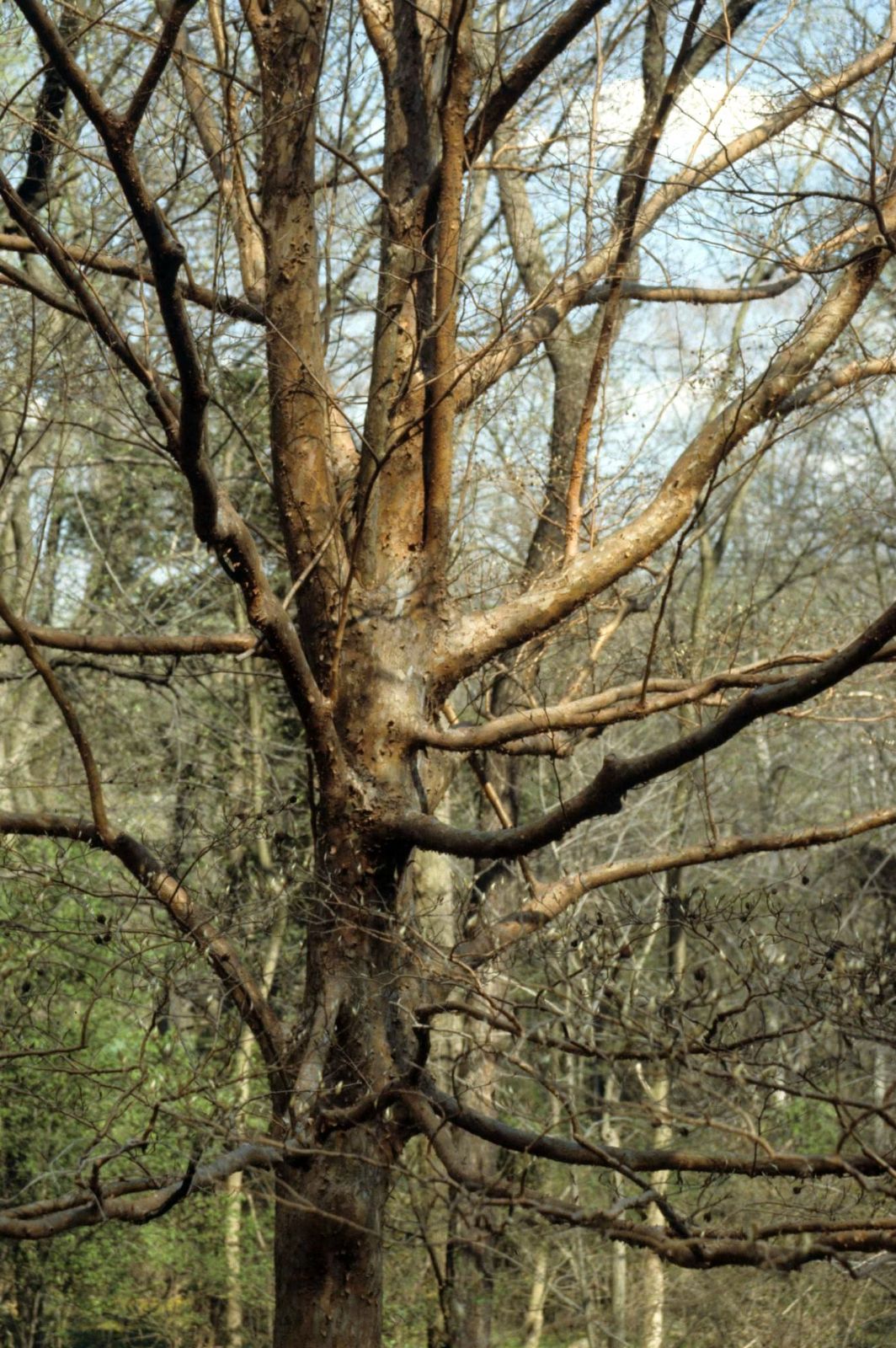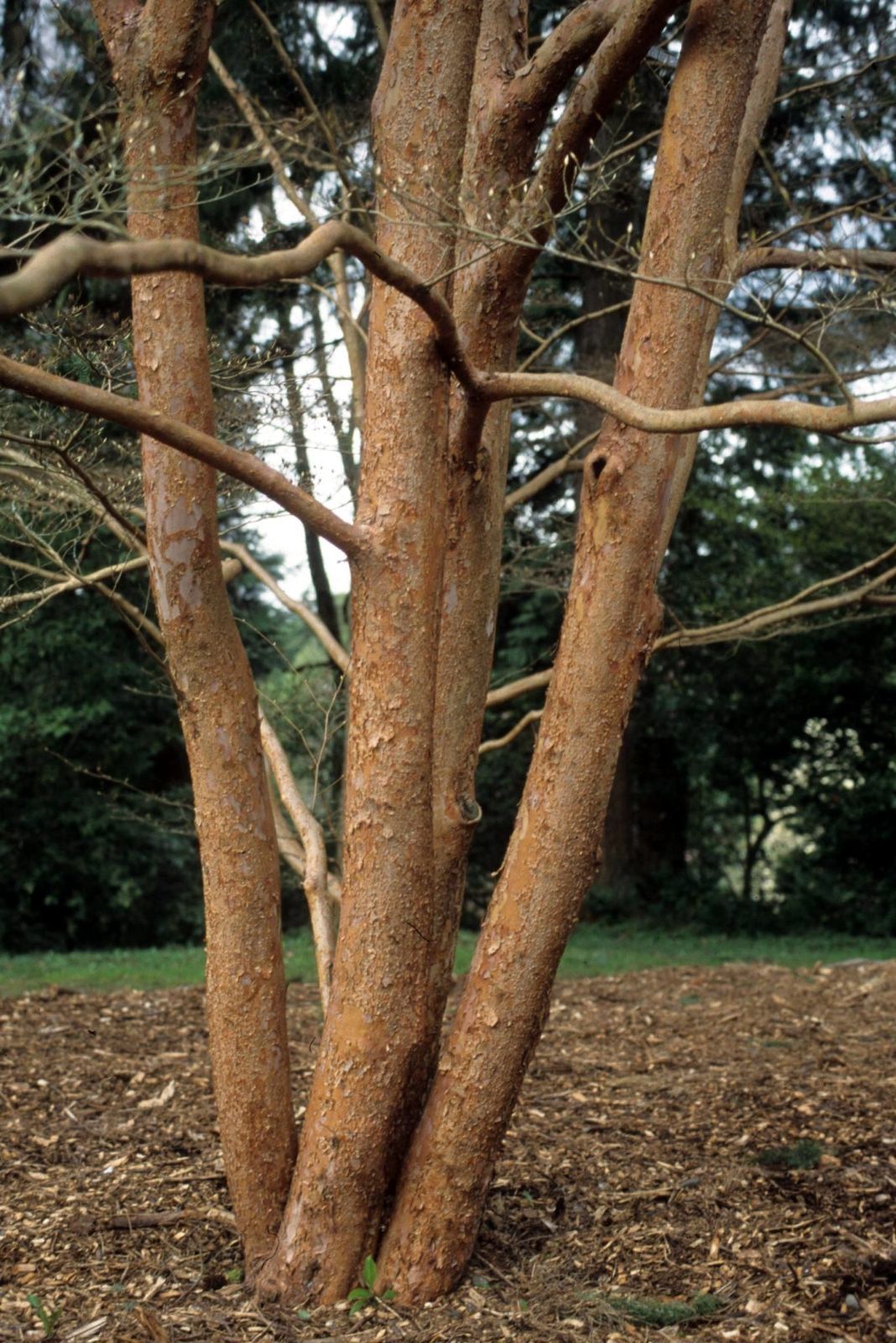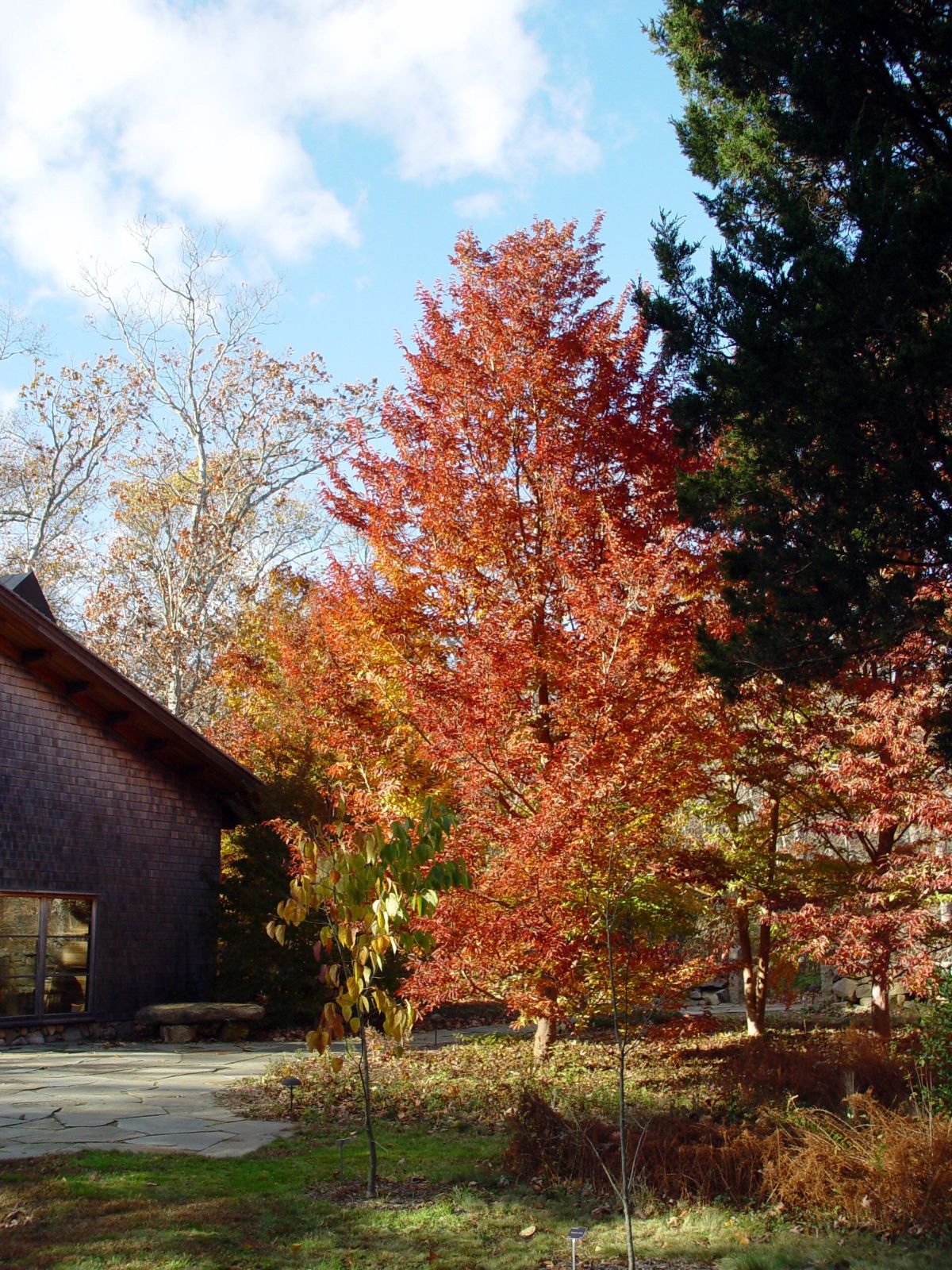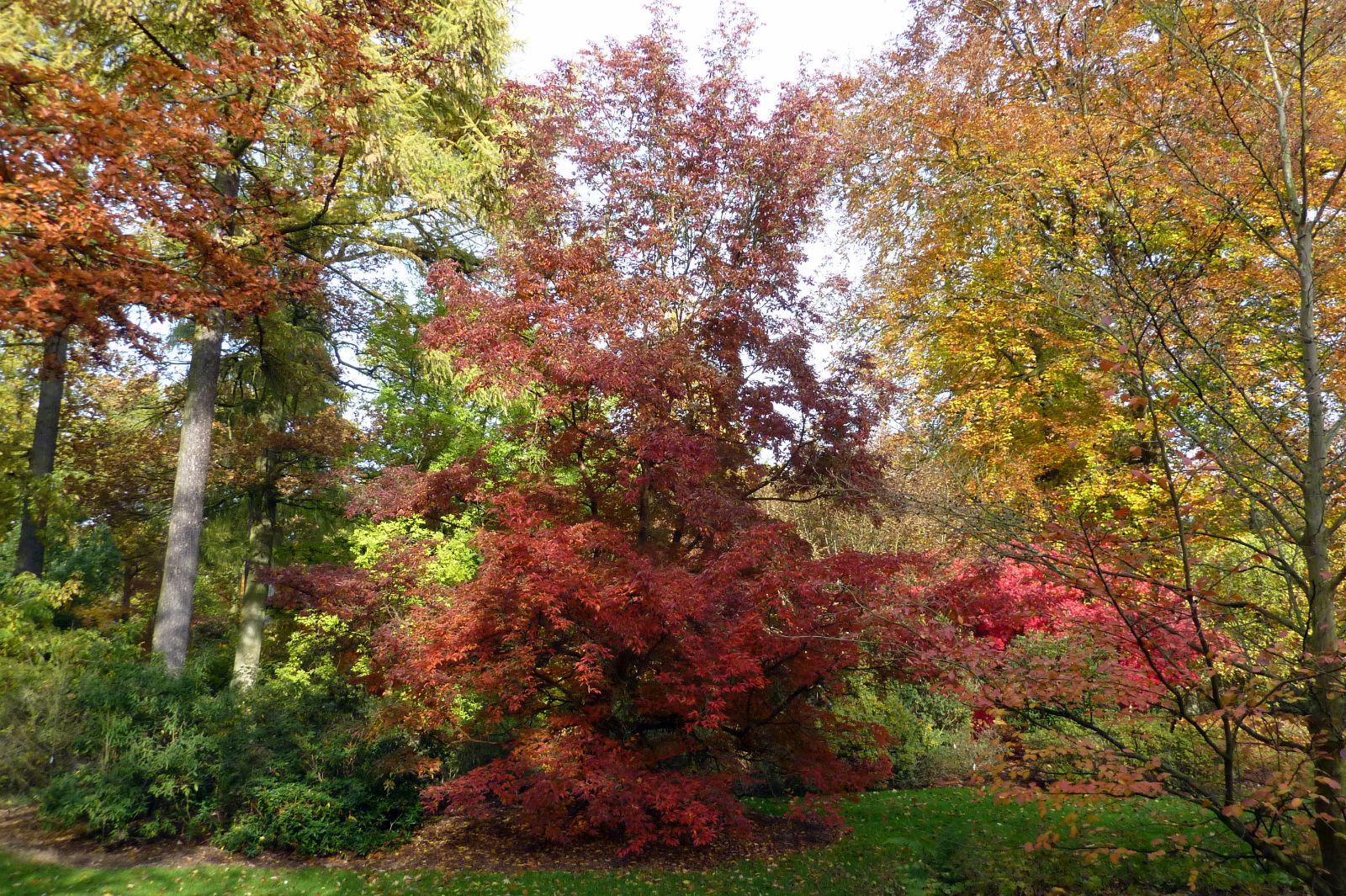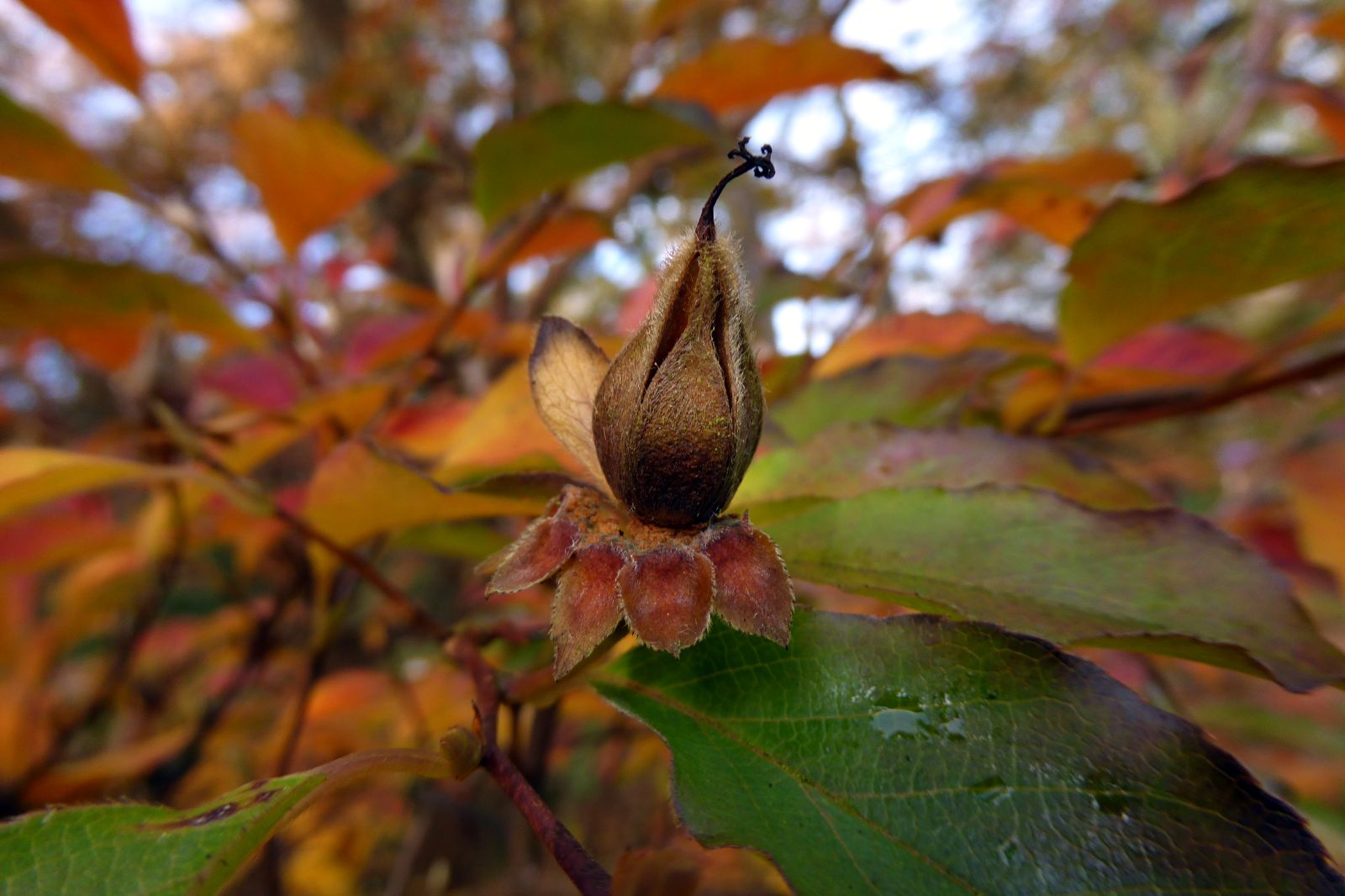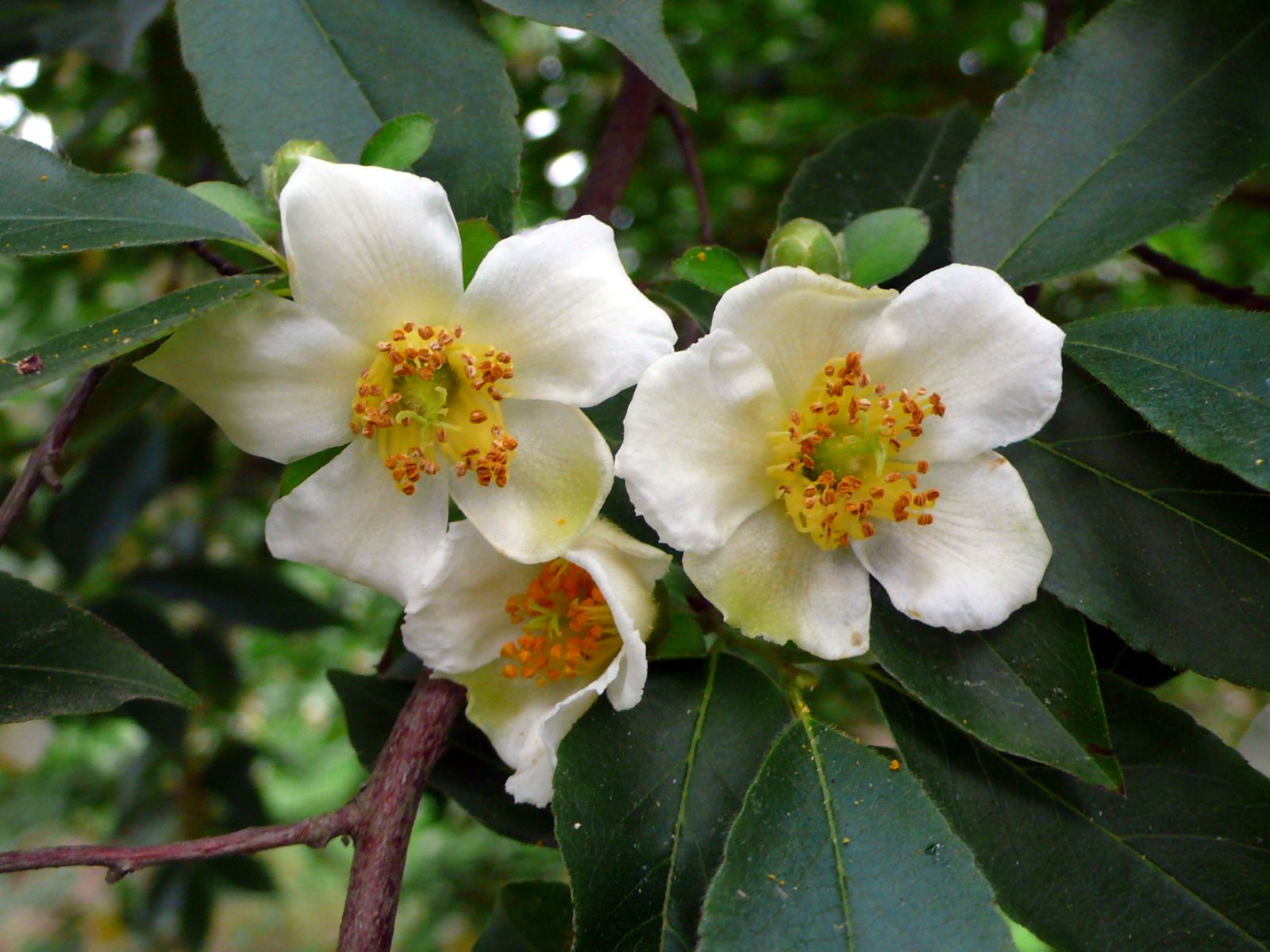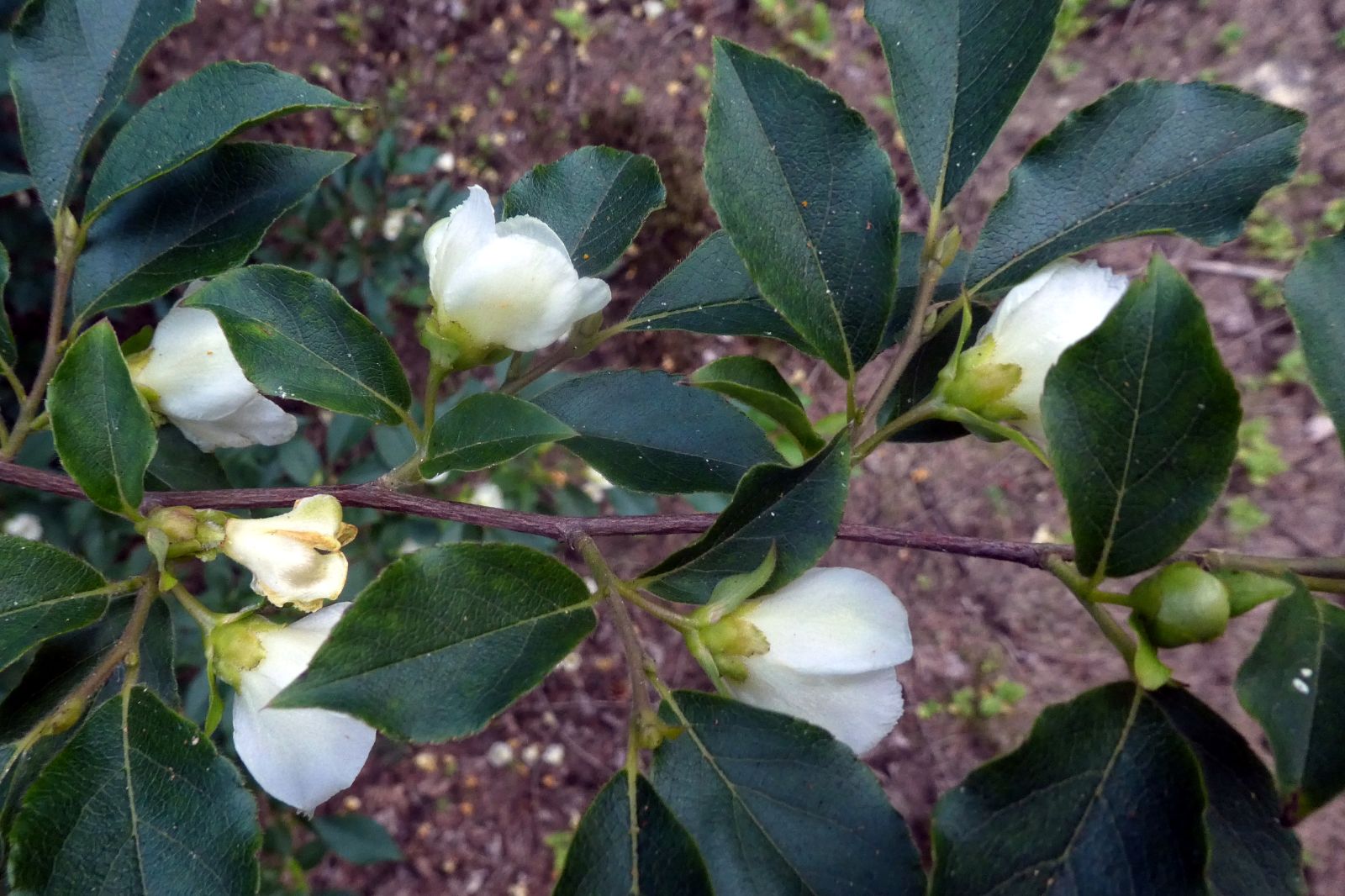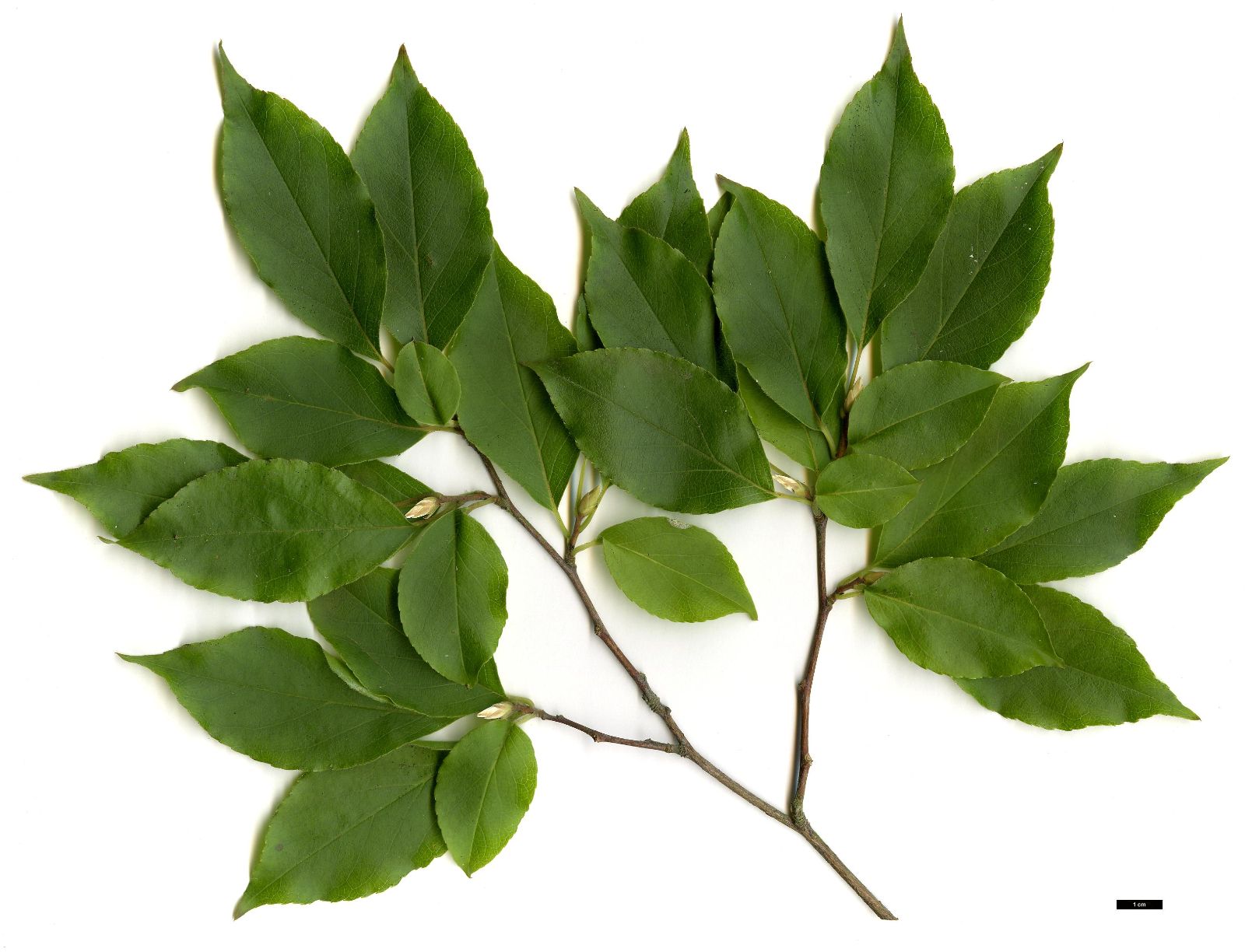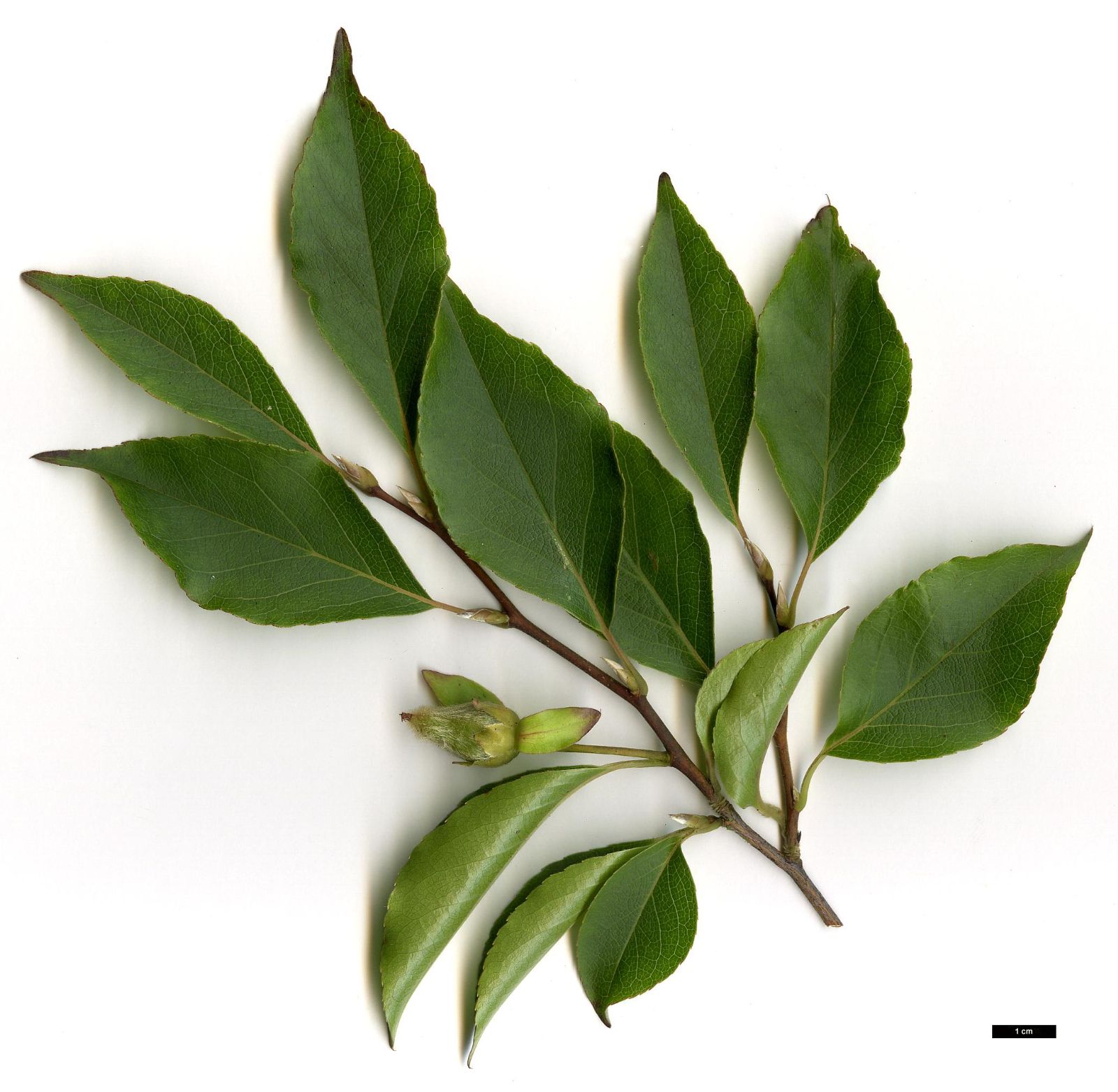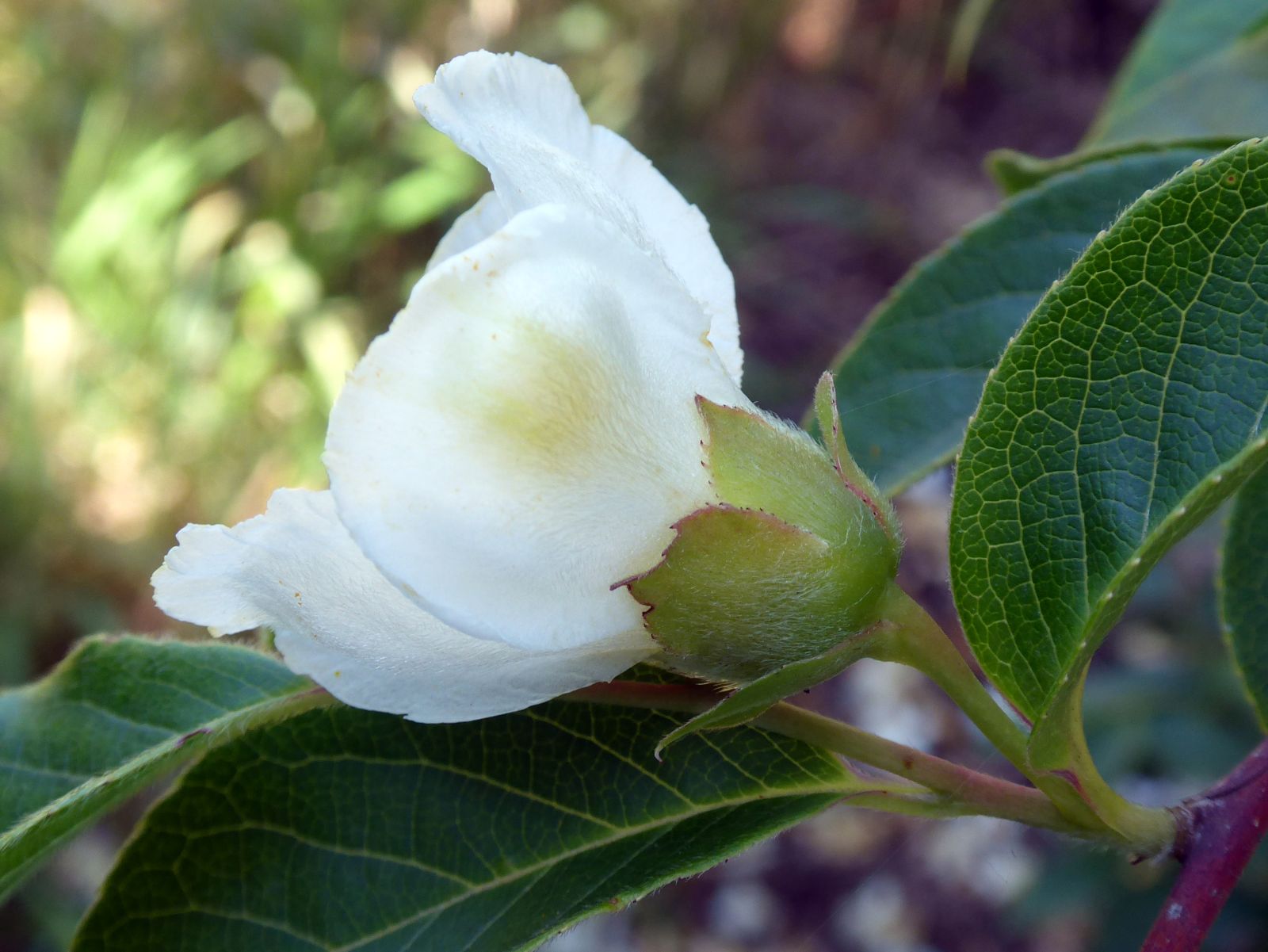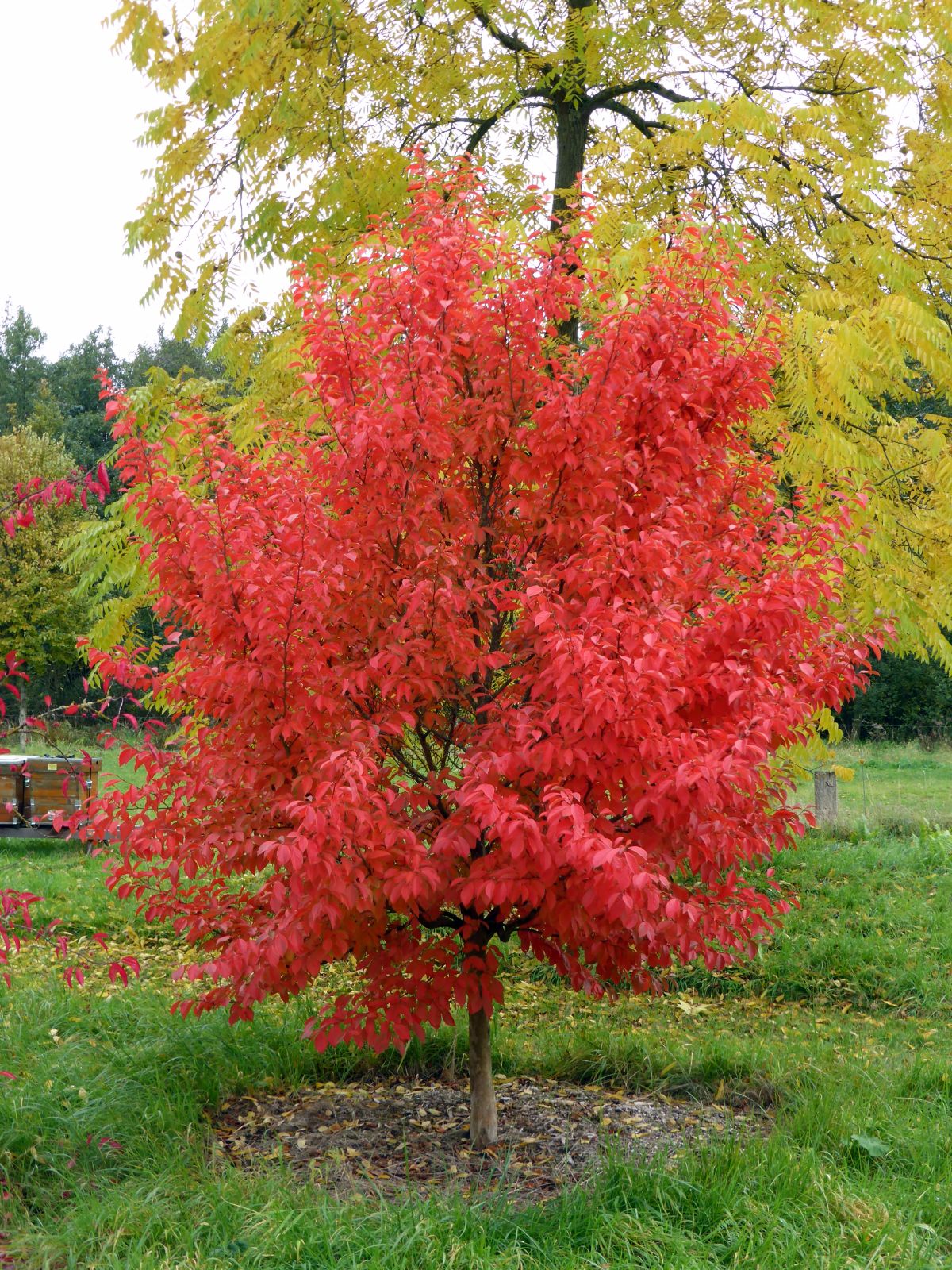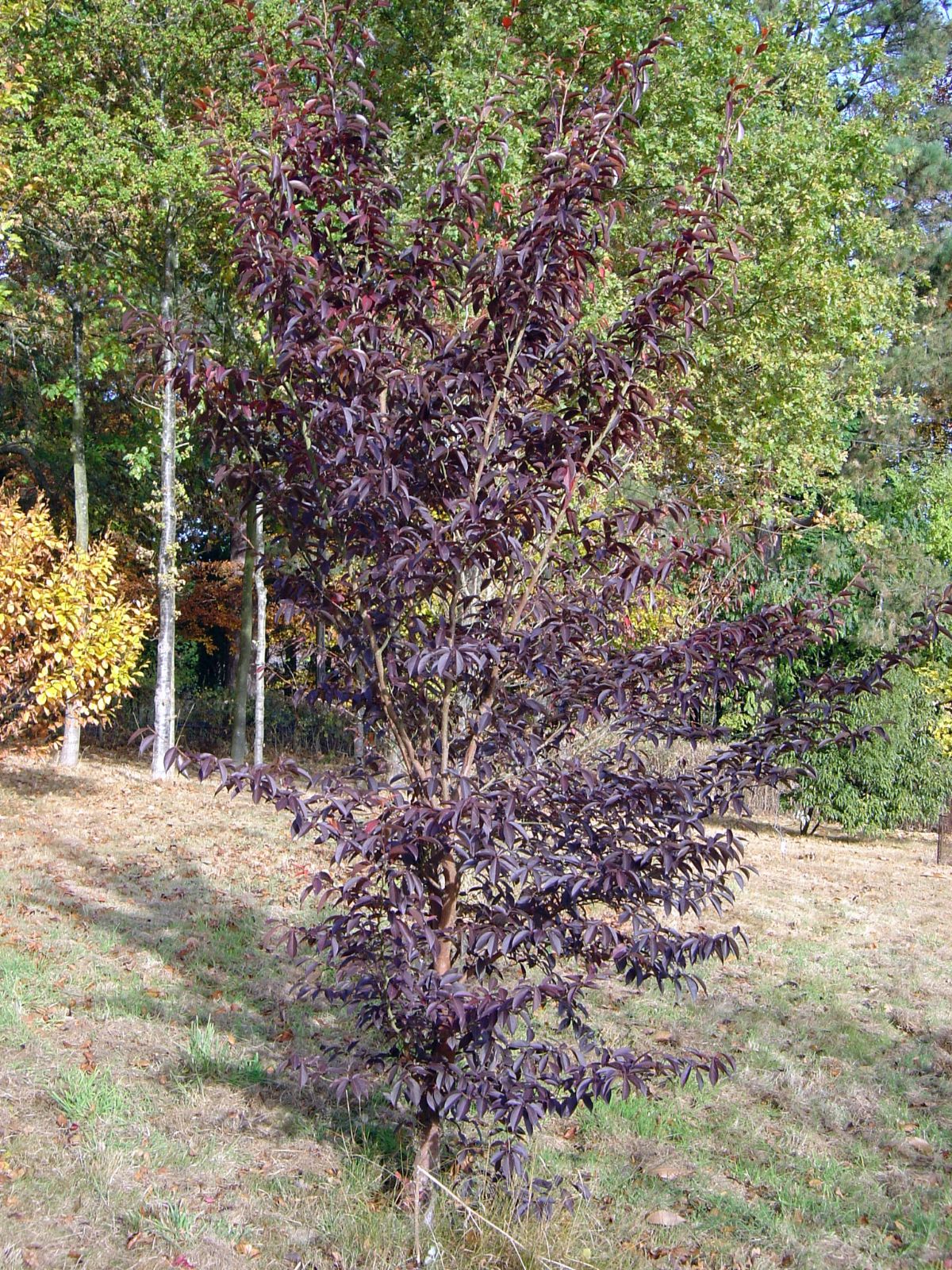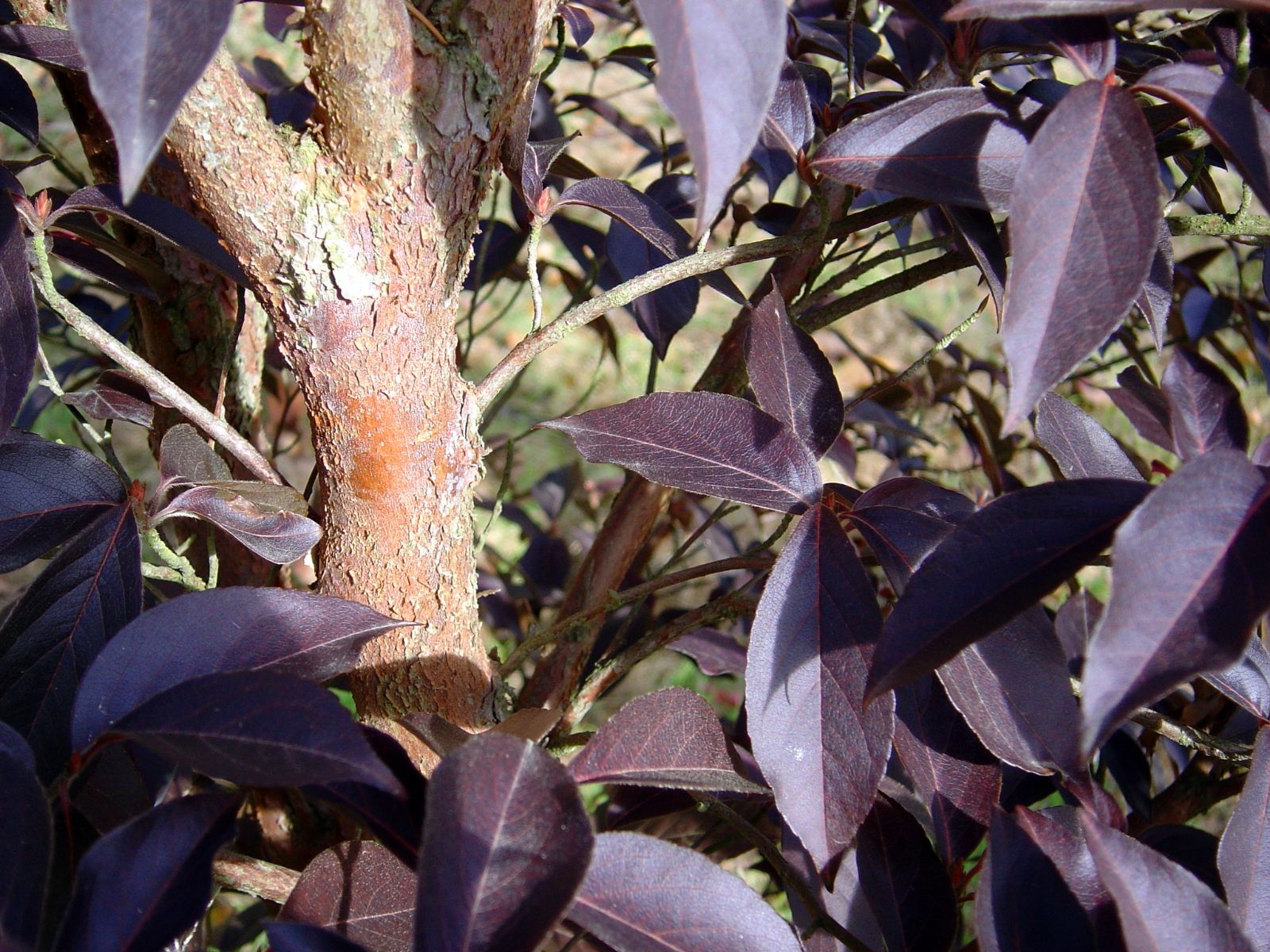Stewartia monadelpha
Sponsor
Kindly sponsored by a member of the International Dendrology Society.
Credits
John Grimshaw (2016)
Recommended citation
Grimshaw, J. (2016), 'Stewartia monadelpha' from the website Trees and Shrubs Online (treesandshrubsonline.
Deciduous shrubs or multi-stemmed trees to 25 m; bark smooth and mottled with alternating reddish-brown and lighter buff-coloured areas, exfoliating in thin sheets; first year twigs pubescent, becoming smooth and reddish-brown; winter buds compressed, c. 7 mm long with 3–5(–7) finely pubescent, imbricated scales. Leaves 4.2–10 × 1.6–3.4 cm, ovate, elliptic to lanceolate, finely appressed-pubescent on both surfaces, with tufts of hairs in vein axils below, margins finely crenate-serrulate, ciliate when young, apex acuminate, base broadly to narrowly cuneate or attenuate; petioles 4–15 mm, shallowly grooved above. Flowers usually solitary, very rarely 2 together; pedicel (3–)7–10(–16) mm; bracts 9–17 × 4–7 mm, closely placed to the base of the calyx, leaf-like, oblong to oblong-ovate, apex acuminate to obtuse, margins finely serrulate; sepals 5, 5–7 × 3–4 mm, fused at the base, the free parts subequal, ovate to suborbicular, apices acute to acuminate, becoming reflexed in fruit; corolla white, lobes 11–15 × 8–12 mm, obovate to suborbicular, margins slightly erose, base cuneate, silky-hair externally; filaments fused for 4 mm, free portion 10 mm, finely pubescent; ovary conic, 3–5 mm, densely pilose and tapering into the basally pilose style; style glabrous above, 3–4 mm, terminating in 5 short stigmatic arms. Capsules 11–14 × 7–11 mm, ovoid, reddish-brown, finely pubescent, particularly at the rostrate apices. Seeds 2 per locule, 5–6 mm long, 3–4 mm wide, planoconvex, irregularly obovate in outline, reddish-brown, the base often shallowly notched, with a very narrow wing. Flowering early summer (Ohwi 1965; Spongberg 1974).
Distribution Japan south-central Honshu, Kyushu, Shikoku South Korea Jejudo
Habitat Montane forest
USDA Hardiness Zone 5-8
RHS Hardiness Rating H5
Conservation status Least concern (LC)
Taxonomic note Individuals with slightly denser pubescence on vegetative parts have been distinguished as S. monadelpha forma sericea (Nakai) Hara (S. sericea Nakai) but although (Spongberg (1974) was unable to uphold any such distinction the name still appears in Japanese literature
Tall Stewartia is the English name adopted by Dirr (2009) for this species, which in the wild can become very large. There are some striking images of huge trees taken by Ernest Wilson in Japan in the Harvard collection, and specimens up to 25 m have been known. In gardens it has not yet achieved such stature, but individuals up to 14 m are recorded from southern England (Johnson 2011). It is said to have been introduced in 1903 (Armitage, Edwards & Lancaster 2014) but details have not been traced. The bark is subdued in comparison to other species, but still peels nicely and becomes an attractive mottle of fawn and cinnamon. The flowers, too, are smaller than most species, but are borne in great abundance, and are surrounded by large bracteoles that are said to suggest green butterflies (Hsu, Boland & Camelbeke 2008). The comment in the Hillier Manual (Armitage, Edwards & Lancaster 2014, and earlier editions) that it has violet anthers is incorrect.
In autumn it colours well, becoming scarlet in areas where there is a long hot summer, but more purple in cooler areas. Dirr (2009) implies that it only colours well every few years, but mentions that the leaves persist until sharp frosts occur in December. In the southeastern USA it is very tolerant of heat and exposure to sun, and Dirr recommends it over S. pseudocamellia for this area.
'Black Dog'
A selection made at Hergest Croft from a seedling supplied by Andrew Norfield, for its unusual dark purple foliage, which can appear almost black in some lights (Hsu et al. 2008).


